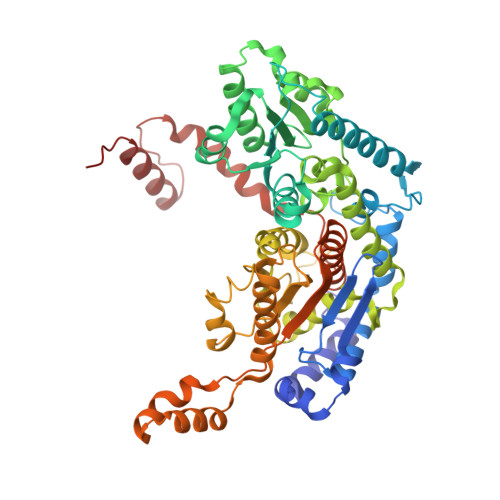Structure of native phosphoglucose isomerase from rabbit: conformational changes associated with catalytic function.
Davies, C., Muirhead, H.(2003) Acta Crystallogr D Biol Crystallogr 59: 453-465
- PubMed: 12595702
- DOI: https://doi.org/10.1107/s0907444902023387
- Primary Citation of Related Structures:
1N8T - PubMed Abstract:
Phosphoglucose isomerase (PGI) is a housekeeping enzyme of metabolism that catalyses the interconversion of glucose 6-phosphate and fructose 6-phosphate, with roles in the glycolytic and gluconeogenic pathways. PGI is also a multifunctional protein that manifests the properties of a cytokine in a wide array of cellular processes, including the production of immunoglobulin by B cells and tumour-cell differentiation. The crystal structure of PGI in the native form from rabbit muscle has been solved at a resolution of 2.5 A by a combination of multiple isomorphous replacement and multi-crystal averaging techniques. Comparison with published structures of rabbit PGI in complex with three inhibitors and with the substrate fructose 6-phosphate reveals a number of conformational changes that may be associated with catalytic function. These occur in the small domain around the sugar phosphate-binding site, in a small helix carrying His388 and in a helix near the C-terminal end. One of these may be the structural rearrangement that has been postulated to be the rate-limiting step for catalysis.
Organizational Affiliation:
Department of Biochemistry and Molecular Biology, Medical University of South Carolina, Charleston, SC 29425, USA. [email protected]














